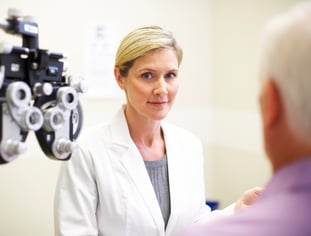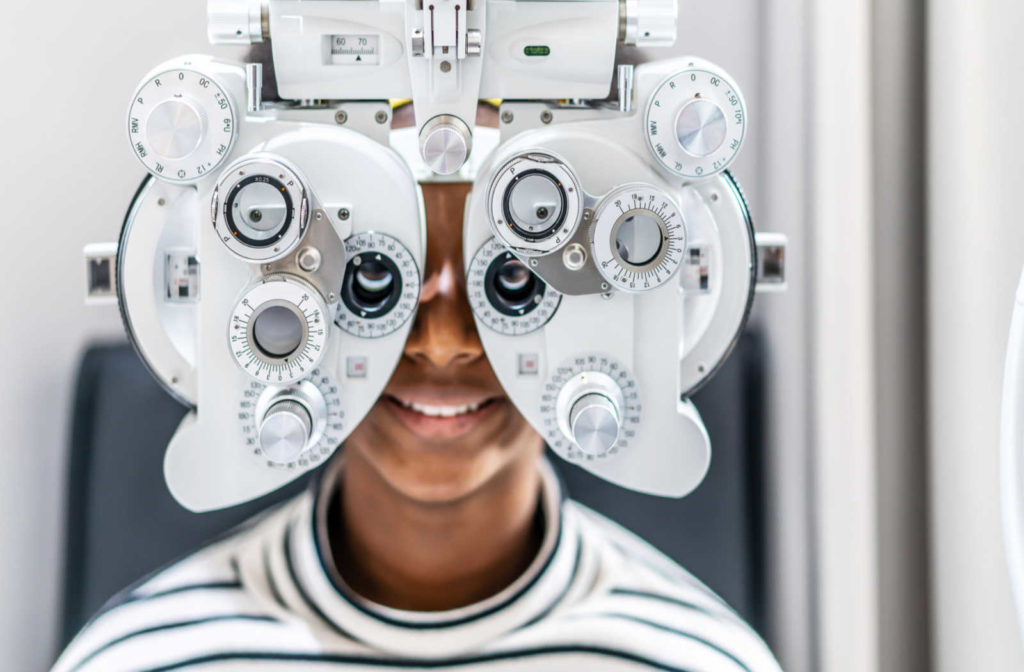Locate a Trusted Optometrist Chino for Household Eye Treatment Solutions
Locate a Trusted Optometrist Chino for Household Eye Treatment Solutions
Blog Article
Checking Out the current Technological Developments in Optometry and What They Mean for Eye Doctors
In the ever-evolving area of optometry, current technical innovations are improving how experts approach eye care. From the precision of Optical Comprehensibility Tomography to the nuanced understandings provided by AI-driven analysis devices, these technologies are setting new criteria in individual evaluation and therapy. Teleoptometry is positioned to redefine access, making sure that expertise transcends geographical restrictions. As these advancements permeate the technique, optometrists are encountered with the difficulty of welcoming these tools to boost client end results. The question stays: just how will these technical changes redefine the roles and duties within the career?
Advancements in Diagnostic Devices
Progressing the area of optometry, technologies in diagnostic tools have actually reinvented the method eye treatment experts analyze and diagnose aesthetic problems and ocular problems. The previous years has actually experienced substantial technical innovations, enabling even more exact and thorough examinations. Optical Comprehensibility Tomography (OCT), for instance, supplies high-resolution cross-sectional photos of the retina, permitting the early discovery of diseases such as glaucoma and age-related macular deterioration. This non-invasive imaging strategy has ended up being vital in modern optometric method.
Another secret advancement is the introduction of innovative corneal topography systems, which map the surface curvature of the cornea with accuracy. These tools are specifically useful for suitable get in touch with lenses and detecting corneal disorders. In addition, digital retinal imaging has transformed conventional ophthalmoscopy, using comprehensive, scenic sights of the retina that facilitate extensive aesthetic evaluations.
The development of wavefront aberrometry has actually additionally been critical, allowing the analysis of refractive errors with unrivaled precision (Opticore Optometry). This modern technology assists in personalizing rehabilitative lenses and enhancing surgical end results for refractive surgeries. Collectively, these analysis advancements empower eye doctors to deliver remarkable individual treatment, ensuring early intervention and customized therapy techniques, ultimately enhancing aesthetic health results
AI in Patient Management
Building on the foundation of innovative diagnostic tools, the consolidation of expert system (AI) in individual administration stands for a transformative jump for optometry. AI systems are significantly utilized to enhance performance, precision, and personalization in client care. By assessing vast amounts of data, AI can determine patterns and anticipate potential eye conditions, making it possible for optometrists to customize interventions better. This capability is essential in managing persistent eye diseases such as glaucoma and diabetic person retinopathy, where early detection and constant surveillance are vital.
Moreover, AI-driven systems facilitate streamlined client interactions and administrative procedures. Automated organizing, virtual consultations, and individualized follow-up strategies not only enhance individual complete satisfaction however likewise enhance time management for specialists. These systems can triage individuals based on the seriousness of their conditions, making sure that those in essential demand obtain timely interest.
In addition, AI improves decision-making by giving optometrists with evidence-based suggestions and therapy pathways. By incorporating information from digital health and wellness documents, AI tools supply insights that inform professional choices, lowering the risk of errors and enhancing person end results. As AI proceeds to advance, its duty in patient administration will likely broaden, reshaping the landscape of optometric treatment.
Developments in Retinal Imaging
In the world of optometry, retinal imaging has actually experienced exceptional technological developments that are improving analysis capacities and individual treatment. Technologies such as Optical Comprehensibility Tomography (OCT) and fundus photography have actually revolutionized how eye doctors examine the retina and visualize.
Improved imaging methods like OCT angiography are further refining analysis precision. This non-invasive strategy maps blood flow in the retina, providing crucial insights right into vascular health without the requirement for color injections. Additionally, adaptive optics innovation is being integrated right into retinal imaging systems to remedy eye aberrations, providing unmatched picture quality. Such developments promote the identification of minute retinal modifications that could indicate illness progression.
Furthermore, advancements in fabricated intelligence are boosting retinal imaging by allowing automatic evaluation of large datasets. These systems assist optometrists in identifying patterns a sign of pathology, therefore boosting analysis precision and efficiency. Jointly, these advancements are transforming retinal imaging into a keystone of modern eye care, improving end results and increasing therapeutic opportunities.
Teleoptometry's Growing Role
Teleoptometry is progressively ending up being an click reference important component of eye care, driven by advancements in data and diagnostic devices. As optometry accepts electronic change, teleoptometry helps with remote assessments, enabling eye doctors to extend their solutions past standard limits. This is especially beneficial in underserved and rural locations where access to specialized eye care is typically limited. By leveraging high-resolution video clip conferencing and advanced retinal imaging, eye doctors can conduct thorough eye examinations from afar, making sure prompt diagnosis and therapy.
The assimilation of synthetic intelligence (AI) additional improves teleoptometry, allowing the evaluation of aesthetic data and helping in the discovery of eye problems such as glaucoma and diabetic retinopathy. AI-powered formulas can swiftly translate intricate imaging information, offering optometrists with beneficial insights that strengthen medical decision-making.
Additionally, teleoptometry sustains connection of care through seamless integration with digital wellness records (EHRs), Optometrist Chino allowing eye doctors to keep comprehensive individual histories. This makes sure that individuals receive constant and customized treatment even when talking to various experts.
Regardless of these benefits, obstacles remain, including ensuring data safety and managing patient expectations. Teleoptometry stands for a considerable stride towards more easily accessible, effective, and patient-centered eye care. As modern technology develops, its role is positioned to broaden better.

Future Trends in Eye Care
A myriad of ingenious trends is established to reshape informative post the future of eye treatment, driven by technological innovations and the advancing demands of patients. One considerable trend is the combination of expert system (AI) in diagnostics, which guarantees to enhance the accuracy and effectiveness of eye evaluations. AI formulas can examine substantial quantities of information from retinal images, possibly detecting conditions like diabetic retinopathy and glaucoma earlier than typical methods.
Furthermore, personalized medication is gaining grip in optometry, with hereditary screening notifying customized therapy plans. This strategy intends to maximize client outcomes by tailoring treatments to specific genetic accounts. Wearable innovation, such as clever contact lenses, is additionally on the horizon, supplying real-time monitoring of intraocular pressure or sugar levels, therefore supplying continuous understandings into ocular and systemic wellness.
The fostering of augmented truth (AR) and virtual truth (VR) in training and patient education is one more arising pattern. These technologies use immersive experiences that can enhance understanding and abilities both for optometrists and clients. As these patterns advance, eye doctors have to remain abreast of technical improvements to supply innovative treatment, making sure better individual outcomes and fulfillment in the dynamic landscape of eye treatment.
Final Thought

Collectively, these diagnostic developments encourage eye doctors to supply remarkable individual treatment, making certain early treatment and tailored treatment strategies, inevitably enhancing aesthetic health outcomes.

As these modern technologies proceed to advance, optometrists must adapt and integrate them into technique, ultimately maximizing operations performance and boosting the standard of eye care provided to people.
Report this page